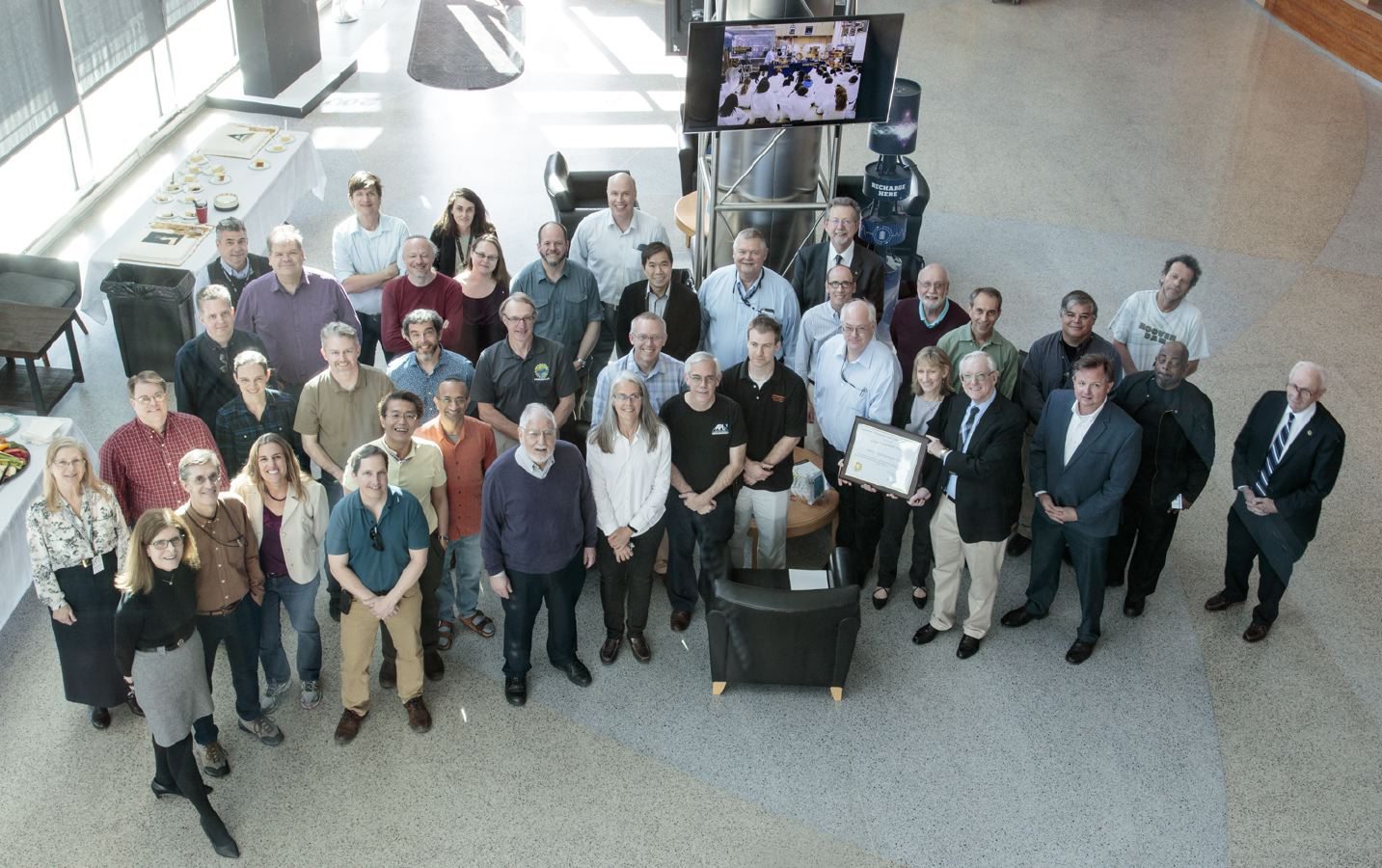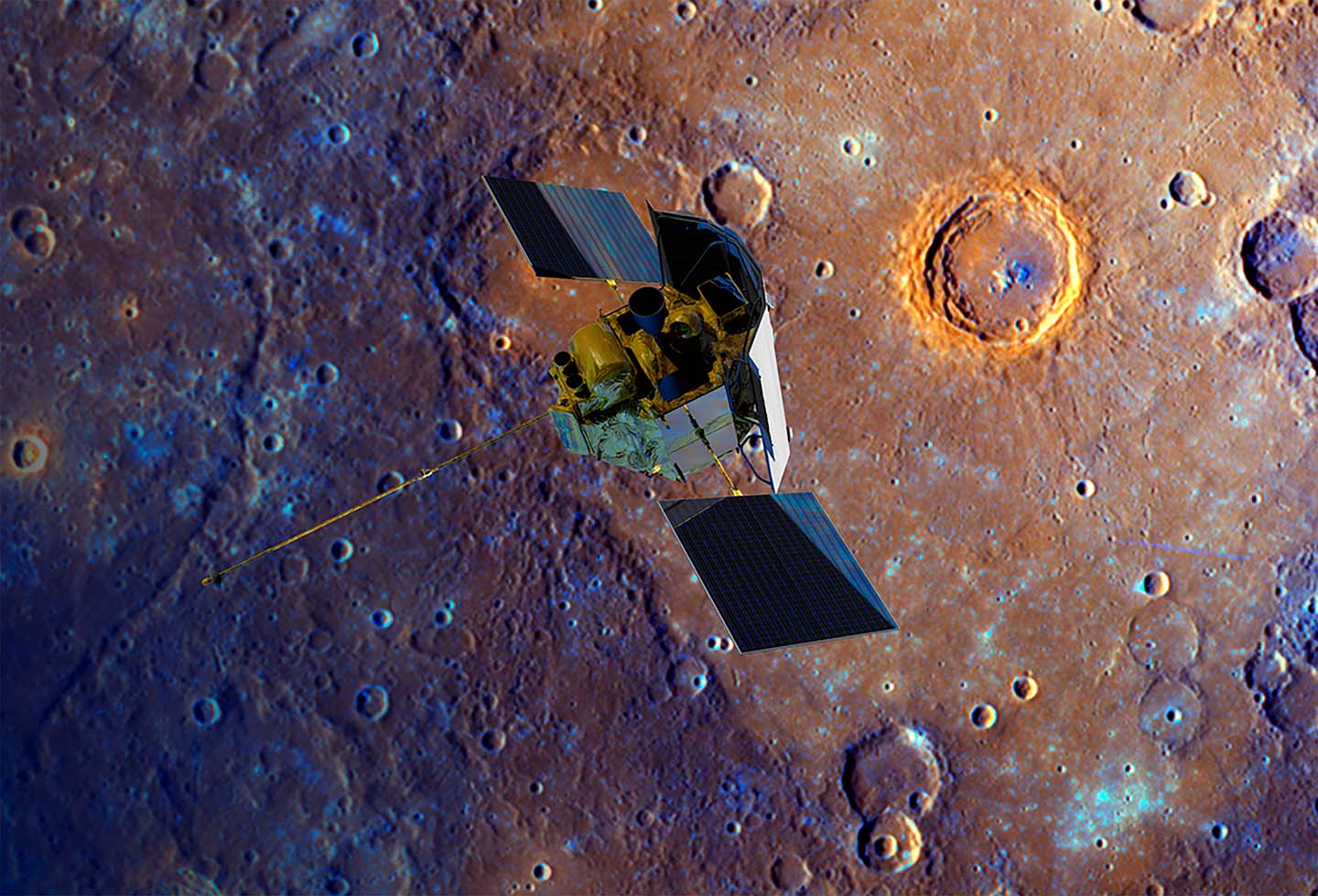Press Release
NASA Honors Mercury Mission Team
Mon, 05/21/2018 - 16:06
On April 30, 2015, the MESSENGER spacecraft — its science mission complete and its fuel exhausted — slammed into the surface of Mercury, forever becoming part of the planet it orbited and examined for more than four years.
Three years later — to the day — NASA honored the MESSENGER team for the tremendous accomplishment of getting the spacecraft into orbit around the innermost planet, operating it for four years in a hostile thermal environment, and producing spectacular scientific results. Team members from the Johns Hopkins University Applied Physics Laboratory (APL) and other MESSENGER partner institutions received the NASA Group Achievement Award in a ceremony on APL’s Laurel, Maryland, campus.
“MESSENGER was a special mission that set a high mark,” said Mike Ryschkewitsch, APL Space Exploration Sector head. “It’s quite an example of what a Discovery [program] mission should be.”
Part of NASA’s Discovery program of low-cost planetary missions, MESSENGER (short for MErcury Surface, Space ENvironment, GEochemistry and Ranging) was the first in-depth scientific investigation of the Sun’s closest planetary neighbor. APL designed, built and operated the MESSENGER spacecraft, which was launched in August 2004 and began orbiting Mercury in March 2011.
The spacecraft completed its primary science objectives by March 2012. Because MESSENGER’s initial discoveries raised important new questions and the payload of science instruments remained healthy, the mission was extended twice, allowing the durable orbiter to make observations from extraordinarily low altitudes and capture images and information about the planet in unprecedented detail.
In spring 2015, the team embarked on a “hover” campaign that allowed the spacecraft to operate as low as three miles (five kilometers) above the planet’s surface. Mission engineers kept MESSENGER aloft in its final weeks using remaining onboard helium pressurant to impart thrust during orbit-correction maneuvers, after all of the spacecraft’s liquid hydrazine fuel had been depleted.
Making observations from such low altitudes above the planet’s surface — a feat that would have been deemed too risky to execute before the end of mission — offered a unique opportunity to collect critical information that has shed light on Mercury’s crustal magnetic anomalies, surface composition and ice-filled polar craters, among other features. MESSENGER finally succumbed to the Sun’s gravitational tug on its orbit, and the spacecraft impacted Mercury at around 8,750 miles per hour, creating a crater some 50 feet wide.

